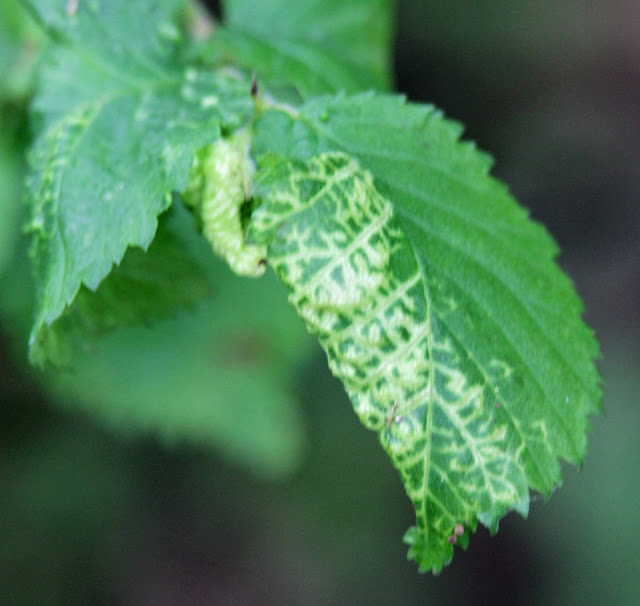There was a little bit of sunshine at the end of the afternoon, and the bees and flies made the most of it!
However to start off with there was a nice 7-spot ladybird.
However the first real excitement were a number of nomad flies, the first of which I found in the darkness of the shaw between the pond and the junction on an elm leaf. The bumps on the elm leaf are almost certainly the elm leaf gall Aceria ulmicola (=ulmi).
In addition there was the start of some elm leaf galling, rather like the leaves I saw the other day beyond Hadlow Place Farmhouse.
Then there were several Nomada flying around in the sun by the oak tree at the start of Great Court. I think these two pictures are of the same insect, which is perhaps most likely to be Nomada flava, although it is impossible to be sure:
Of course where there are kleptoparasitic nomad bees, there need to be hosts, and sure enough I found several Andrena solitary mining bees here and further along the plum hedge. the first two pictures are Andrena carantonica (scotica), as ID'd by Eucera:
There were also a few smaller hoverflies. This one is probably a Platycheirus, and it could perhaps be the commonest species, Platycheirus albimanus.
I think this is a different hoverfly species, although it is difficult to see the pattern on the top of the abdomen. I was pleased with these photos.
However to start off with there was a nice 7-spot ladybird.
However the first real excitement were a number of nomad flies, the first of which I found in the darkness of the shaw between the pond and the junction on an elm leaf. The bumps on the elm leaf are almost certainly the elm leaf gall Aceria ulmicola (=ulmi).
In addition there was the start of some elm leaf galling, rather like the leaves I saw the other day beyond Hadlow Place Farmhouse.
Then there were several Nomada flying around in the sun by the oak tree at the start of Great Court. I think these two pictures are of the same insect, which is perhaps most likely to be Nomada flava, although it is impossible to be sure:
Of course where there are kleptoparasitic nomad bees, there need to be hosts, and sure enough I found several Andrena solitary mining bees here and further along the plum hedge. the first two pictures are Andrena carantonica (scotica), as ID'd by Eucera:
There were also a few smaller hoverflies. This one is probably a Platycheirus, and it could perhaps be the commonest species, Platycheirus albimanus.
I think this is a different hoverfly species, although it is difficult to see the pattern on the top of the abdomen. I was pleased with these photos.












No comments:
Post a Comment